The Ouija Board, a.k.a. spirit board or talking board, is a flat board with letters of the alphabet, numbers, and other symbols printed on it. It also has a planchette, a heart-shaped or triangular piece of wood or plastic that is used to spell out messages from spirits.
The origins of the Ouija Board can be traced back to the late 19th century. Spiritualism was gaining popularity during this time, and people were looking for ways to communicate with the dead. In 1890, a businessman and inventor named Elijah Bond patented the first version of the Ouija Board.
According to legend, Bond’s sister-in-law, Helen Peters, was using the board with her friends when they asked it what they should call it. The board spelled out “O-U-I-J-A,” and when they asked what it meant, the board replied, “Good luck.” From that day forward, the board was known as the Ouija Board.
The Ouija Board became a cultural phenomenon, especially during World War I and the 1920s. It was used as a form of entertainment at parties and social gatherings, but it was also used by spiritualists and mediums to communicate with the dead.
Dark Side Of Ouija
Elijah Bond first commercialized it in 1890. He claimed it was a harmless game. However, users reported strange and terrifying experiences. Some said spirits possessed them. Others reported mental health issues.
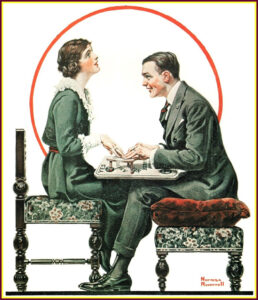
The board gained popularity in the 20th century. Horror movies and stories linked it to demonic possession. Many religious groups condemned its use. They believed it opened doors to negative energies.
In the 1940s and 1950s, the Catholic Church even condemned the use of the Ouija Board, labeling it as a form of divination and a doorway to the demonic.
Despite the controversy surrounding the Ouija Board, it continues to be a popular tool for divination and spiritual communication. Some practitioners of witchcraft and other spiritual traditions use the board in their practice, believing that it can help them connect with spirits and gain insight into the future.
History Behind Ouija
Its inventors claimed it to be a window to the afterlife. Spirits supposedly guide the planchette, spelling out messages from beyond. Yet, many believe these spirits to be deceptive, often masquerading as benevolent entities.
Numerous accounts tell of malevolent forces unleashed, tormenting users long after the session ends. Tales of possession, hauntings, and unexplained phenomena link closely to Ouija sessions gone awry.
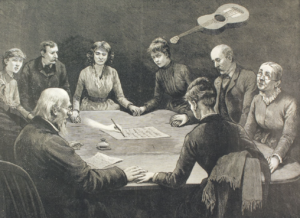
Critics argue that it’s mere psychology at play, yet the air of mystery persists. The Ouija board remains a controversial and enigmatic tool, casting a dark shadow in the realm of the supernatural. Approach it with caution.
What are the Consequences of Using Ouija Board?
Dabble not lightly in the realm of Ouija, for consequences grave and unseen may unfold. When you summon spirits, you open doors unknown. Dark energies may seize this chance, intruding upon the realm of the living. Malevolent entities, once dormant, may awaken, lusting for influence and chaos.
These spirits may deceive, masquerading as benign, while weaving webs of lies and manipulation. They thrive on fear, drawing strength from your terror.
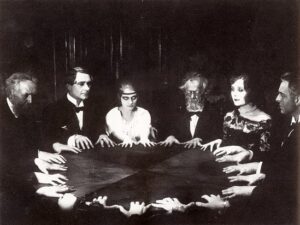
Others whisper secrets, true and false entwined, seeking to sow seeds of doubt and discord. They play games with your sanity, leaving marks unseen upon your soul. You may find your surroundings charged with unseen tension, objects moving, and whispers in the dark.
And when the session ends, the board may not suffice to close the door you’ve opened. The spirits, once invited, may linger, unwilling to depart. Thus, you risk haunted days and restless nights, as unseen forces play with fate and fear.
These assumptions may not be proven, but as many horror movies confirm, it is better to be careful! Even if you are just going to play silly games with it, you should do everything according to the book, taking into account possible possibilities.
Ouija Board 101: Everything You Need To Know
This guide unveils the secrets you must know before daring to commune with the spirits.
Respect the Board: Obviously, this is not a simple game. Understand that you could be dealing with forces beyond your comprehension.
Never Use Alone: You need strength in numbers. Don’t attempt this solo; the spirits may overpower you.
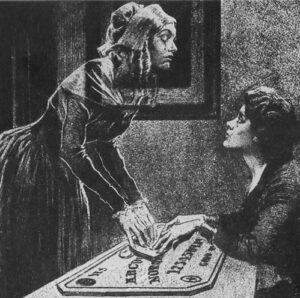
Choose a Quiet Place: Distractions will open you up to vulnerabilities. Find a silent, secluded space.
Avoid Graveyards: Never play near a graveyard. The energies there are too strong and unpredictable. You risk inviting something you cannot control.
Light Candles: Illuminate the room with candles. Darkness attracts darker energies.
Create a Protective Circle: Surround the board with salt. This forms a barrier against malevolent entities.
Be Clear and Serious: Speak with conviction. Frivolity invites chaos.
Avoid Negative Entities: If the planchette starts moving in a figure eight or counts down from nine to zero, end the session immediately. You’re in danger.
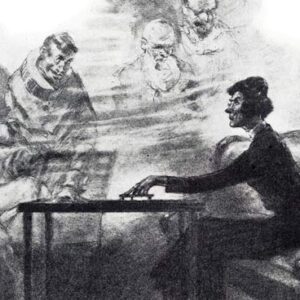
Do Not Provoke: Do not taunt or mock the spirits. They will not take kindly to disrespect.
Close the Session Properly: Always say goodbye. Leaving the portal open invites unwanted guests.
Store the Board Safely: Keep the board in a safe and sacred place. Treat it with reverence.
Know When to Stop: End the session if you feel overwhelmed or scared. Prioritize your safety.
Cleanse the Space Afterward: Burn sage to purify the area. Leave no trace of the energies behind.
Is It okay to Use a Ouija board on Halloween?
The use of an Ouija board during Halloween—or any time of year, for that matter—largely depends on individual beliefs, experiences, and comfort levels. Halloween, with its eerie and mystical atmosphere, often inspires people to engage in activities related to the supernatural. An Ouija board thought to facilitate communication with spirits, fits well within this theme.
However, it is crucial to approach such practices with caution and awareness. People have reported a wide range of experiences with Ouija boards, spanning from harmless fun to unsettling or even terrifying encounters. The key is to ensure that every participant feels safe and comfortable, and is willing to partake in the activity.
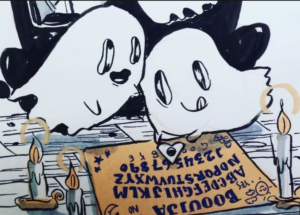
While using an Ouija board during Halloween can add an element of intrigue and spookiness to your celebrations, it is vital to prioritize the well-being and comfort of all involved. Before using the board, it might help to set some ground rules and establish a respectful and serious tone, making it clear that it is not a game to be taken lightly. Additionally, participants should remain open-minded and prepared for any outcome, while staying skeptical and rational, remembering that many of the planchette’s movements (the piece that moves on the board) can be attributed to subconscious physical movements.
True Ouija Board Stories
While many people use Ouija boards without experiencing anything out of the ordinary, there are numerous stories of strange and sometimes unsettling experiences associated with them. Here are a few examples:
The Exorcist
Perhaps the most famous Ouija board story is the one that inspired the movie “The Exorcist.” In 1949, a 14-year-old boy named Roland Doe (pseudonym) was said to be possessed by a demon after playing with an Ouija board. His family enlisted the help of two priests, who attempted an exorcism that reportedly lasted several weeks. The events were dramatized in the movie, which became a cultural sensation.
Pearl Curran
In the early 1900s, a woman named Pearl Curran claimed to receive messages from a spirit named Patience Worth through an Ouija board. Curran had never shown any interest in writing before but went on to produce several novels, plays, and poems attributed to Patience Worth. Some researchers believe that Curran was using the Ouija board as a form of automatic writing, while others see it as evidence of paranormal activity.
The Zozo Phenomenon
One recurring theme in Ouija board stories is the presence of a malevolent spirit or entity named Zozo. Many people claim to have had terrifying experiences with Zozo, including sudden changes in temperature, strange noises, and physical attacks. Some believers in the paranormal see Zozo as evidence of the dangers of Ouija boards, while skeptics see it as a case of mass hysteria or suggestible thinking.
Carl Jung
The famous psychologist Carl Jung experimented with an Ouija board in the early 20th century to explore the unconscious mind. Jung was intrigued by the board’s ability to produce seemingly random and meaningful messages and saw it as a tool for accessing the collective unconscious. However, he also cautioned against taking the board too seriously, noting that it was ultimately a product of the users’ subconscious minds.

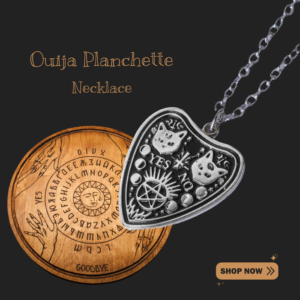
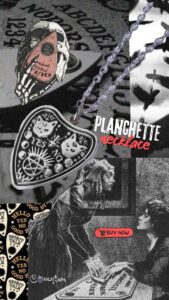
[…] As the veil between our world and the spirit world thins on Halloween, communication with the spirits becomes easier—if you dare. For those curious and brave enough, employing a Ouija board could serve as a conduit to the other side. Ensure you set protective boundaries and approach with respect to experience this mysterious communication safely. For the ouija board user guide, check out this article. […]